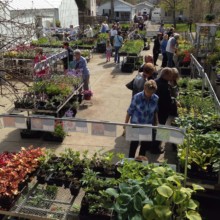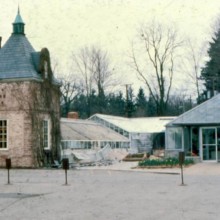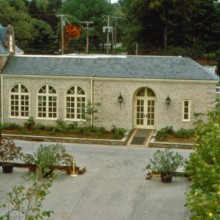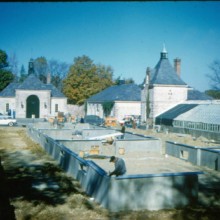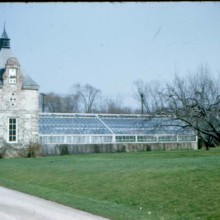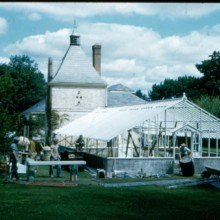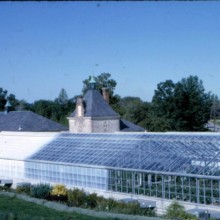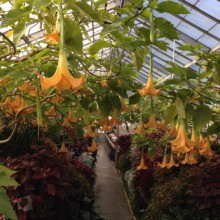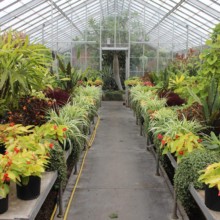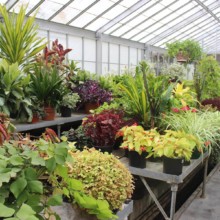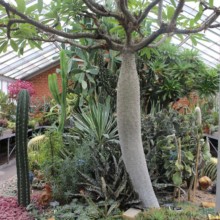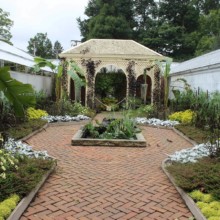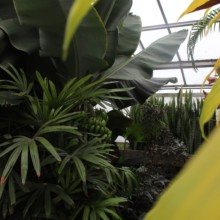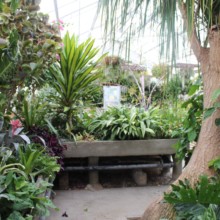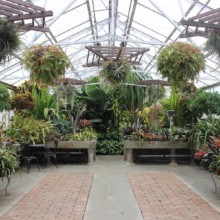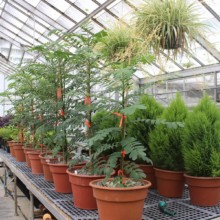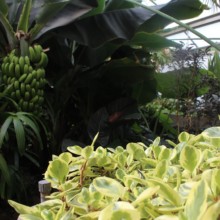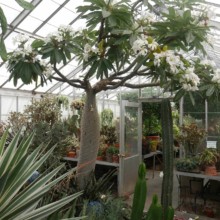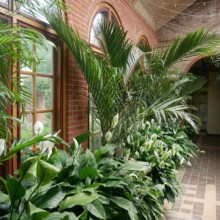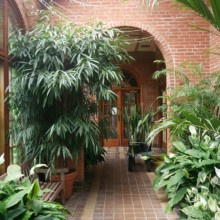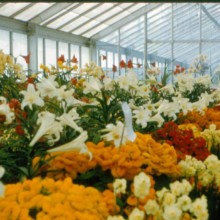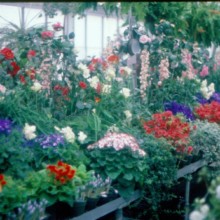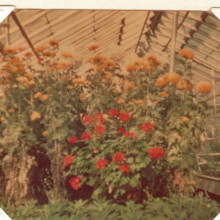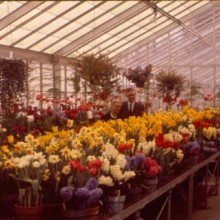Display Greenhouse
Mr. King, our founder, seemed to be particularly fond of greenhouses. We have pictures of greenhouses he had prior to the construction of his estate in 1926 which were replaced by a new greenhouse built as part of the service building compound on the new estate. By all accounts Mr. King’s greenhouses produced transplants for vegetables, cut flowers, and plants for use around the property.
In the 1960’s Kingwood Center Gardens vastly expanded Mr. King’s greenhouse, and lavish ornamental cold weather floral shows in the greenhouse became an integral part of Kingwood’s offerings for the next thirty years. Pre-spring forced bulbs were a primary feature of those shows. Each show changed with the seasons as plants were discarded after flowering to make room for the next crop.
A rare artifact from Mr. King’s time is a pair of logbooks of greenhouse activities in 1934 and 1935 which reveal heavy use of his greenhouse, including a reference to his “show” pigeons which must have lived in the dovecote associated with the greenhouse. A favorite piece of oral history about Mr. King is that he so loved his flowers from Kingwood that he had them shipped to him when he was out of town. The logbooks reveal a mailing list of several people who had cut flowers from the greenhouse shipped to them, which certainly adds credence to the idea that Mr. King would put himself on that list when he was away.
After Mr. King’s death his 1,500 square foot greenhouse was used by Kingwood Center Gardens for about a decade as the only greenhouse. In the mid 1960’s it was enlarged to about 7,000 square feet. Another 650 square feet was added years later. The massive expansion allowed for the aforementioned floral displays in addition to production for outdoor displays. As the production component grew and plant sales were added to the mix, additional growing space was added with two poly tunnels, a cold frame, and now a sales greenhouse in the Garden Gateway.
Thousands of annuals are raised every year for the extensive outdoor seasonal displays, and the greenhouses also support production for the Garden Shop, now part of the Garden Gateway complex.
Another key role for the greenhouses is the overwintering of tender plants that are used in the outdoor seasonal displays. Seed production is the largest source of plants for the annual displays; the use of overwintered tropical plants is critical to offering the pizazz for which our gardens are known.
